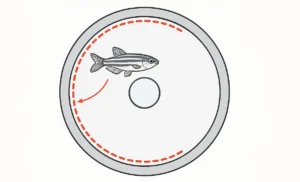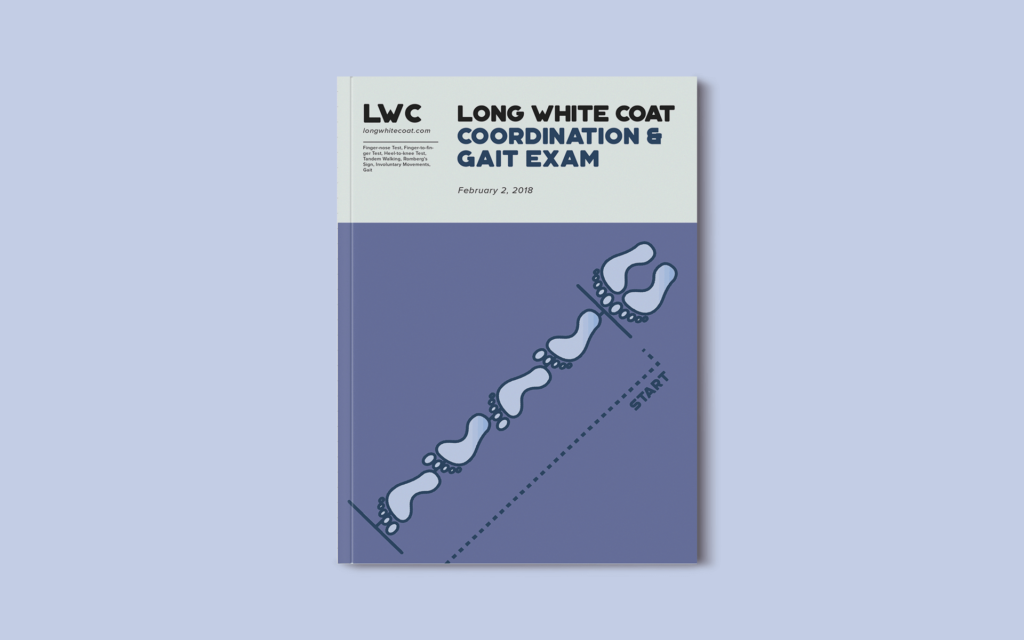

Coordination of movements refers to the performance of purposeful movements carried out smoothly by different groups of muscles. For this to occur, the motor, sensory and cerebellar systems need to be intact. Loss of coordination is called ataxia which is of two types: sensory and cerebellar. There are several tests that can be done to assess coordination. Sensory ataxia is due to the loss of sense of position. Hence the coordination tests become worse when the patient closes their eyes. Otherwise, sensory ataxia is compensated through vision. In cerebellar ataxia, the closure of the eyes has no effect at all.
A normal person will be able to perform these tasks seamlessly. If there is a problem with coordination, it will result in overshooting.
A normal person will be able to perform these tasks seamlessly. If there is a problem with coordination, it will result in overshooting.
The movements will be clumsy and jerky in loss of coordination.
A patient with cerebellar dysfunction is unable to do so and tends to fall towards the diseased side.
This helps to differentiate between sensory and cerebellar ataxia. Ask the patient to stand with their feet close together. A patient with sensory ataxia is steady when eyes are open and becomes unsteady when they close their eyes. A patient with cerebellar ataxia will be equally unsteady with eyes open or closed.
These are rhythmic, involuntary movements resulting in alternating contractions and relaxation of groups of muscles. To check for tremors ask the patient to outstretch their arms and abduct their fingers. If the tremors are still not obvious but are suspected, place a piece of paper on the dorsum of the hand and observe its movements. There are different causes of tremors, and they all present with different types of tremors.
Anxiety: the tremors are fine and become obvious only when the arms are outstretched, and fingers are spread. Hands will be cold and sweaty.
Thyrotoxicosis: tremors are similar to those of anxiety, but hands are sweaty and warm.
Essential familial tremors: tremors are coarse and present during rest and activity.
Senile tremors: these are similar to essential familial tremors but only occur in old age.
Parkinsonian tremors: these are slow and coarse and are pill-rolling movements. They disappear during voluntary work and sleep.
Intention tremors: ask the patient to hold an object. The tremors will occur during voluntary work but disappear at rest. These are the features of cerebellar dysfunction.
Flapping tremors: ask the patient to outstretch arms and dorsiflex hands at wrists. Jerky movements of the hands occur due to flexion and extension of the wrists and fingers. Flapping tremors can be caused by respiratory, renal, hepatic, or cardiac failure.
These are repetitive and stereotyped movements with the same movement being repeated again and again.
These are semi-purpose movements that look like fragments of normal movements but are repeated in a disorderly manner. These occur in Huntington’s chorea and rheumatic fever (Sydenham’s chorea).
These are slow writhing movements that primarily affect the distal parts of the limbs.
These are sudden shock-like contractions that involve one or more muscles or a whole limb. These are usually features of epilepsy.
There are sudden, violent, throwing movements of the limbs on one side. They occur due to the lesion in the contralateral subthalamic nucleus.
These are similar to the athetoid movements but involve the proximal parts of the limbs or trunk. These are also called torsion spasms. Spasmodic torticollis (in which repetitive rotatory movement of the head and neck to on side occurs) and dystonia musculorum deformans are examples of torsion spasms.
The patient doesn’t lift his/her feet off the ground completely so that the toes remain in contact with the ground. Legs swing outward and forward in a circular fashion. This is seen in UMN paraplegia. In hemiplegic gait, only one leg is affected.
Patients lift their feet high to clear the toes from the ground and then return it with a loud slapping noise. This is seen in patients with bilateral foot drop as a result of the weakness of the extensors of the feet, as in polyneuropathy.
Patients walk on a broad base in a reeling manner. This occurs in the cerebellar lesion.
The body sways from side to side as each step is taken. It occurs in proximal muscular weakness, as in myopathies. It also occurs in congenital dislocation of hip joints.
A patient with Parkinsonism bends forward with flexion at the hips and knees. Arms are flexed at the elbows and adducted at the shoulder. There are no associated movements during walking. The patient makes rapid shuffling movements with their feet dragging against the floor.

Monday – Friday
9 AM – 5 PM EST
DISCLAIMER: ConductScience and affiliate products are NOT designed for human consumption, testing, or clinical utilization. They are designed for pre-clinical utilization only. Customers purchasing apparatus for the purposes of scientific research or veterinary care affirm adherence to applicable regulatory bodies for the country in which their research or care is conducted.